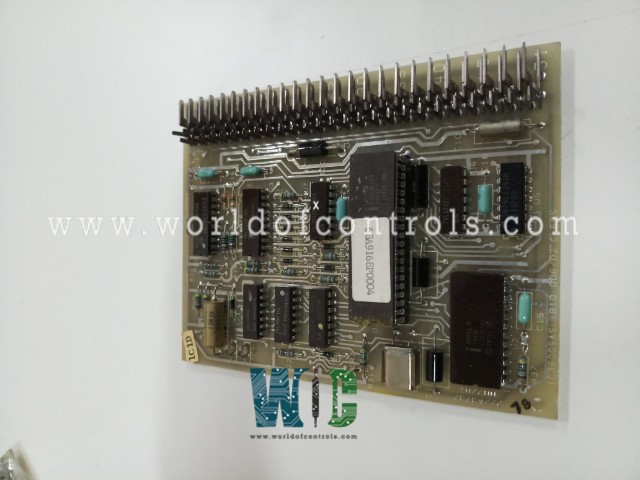
World Of Controls understands the criticality of your requirement and works towards reducing the lead time as much as possible.
IC3600SASC1C1F - Microsynchronizer Speed Control Card is available in stock which ships the same day.
IC3600SASC1C1F - Microsynchronizer Speed Control Card comes in UNUSED as well as REBUILT condition.
To avail our best deals for IC3600SASC1C1F - Microsynchronizer Speed Control Card, contact us and we will get back to you within 24 hours.
SPECIFICATIONS:
Part No: IC3600SASC1C1F
Manufacturer: General Electric
Product Type: Microsynchronizer Speed Control Card
Series: Mark II
Operating temperature: -35 to 65 ºC
Power Supply Voltage: 24 V dc
Board Size: 2.5 cm high x 8.5 cm
Weight: 0.48 kg
Availability: In Stock
Country of Origin: USA
FUNCTIONAL DESCRIPTION:
IC3600SASC1C1F is a Microsynchronizer Speed Control Card manufactured and designed by General Electric as part of the Mark II Series used in GE Speedtronic Gas Turbine Control Systems. A Microsynchronizer Speed Control Card, often referred to in the context of turbine control systems, is a specialized electronic component designed to ensure precise synchronization and speed control of a turbine with the electrical grid. Here’s an explanation of its function and significance:
INSTALLATION:
Identify a suitable location within the turbine control cabinet or rack to securely mount the card. Ensure the availability of the appropriate power supply voltage as specified by the turbine system requirements. Ensure the installation environment meets recommended temperature, humidity, and cleanliness conditions to protect the card from potential damage. Power down the turbine and ensure all electrical connections are safely disconnected. Connect the necessary cables and connectors to interface the card with sensors and other control system components as per the wiring diagram provided in the installation manual.
OPERATION:
Power up the turbine and ensure all systems are initialized properly. Verify that the IC3600SASC card is powered and communicating with other components within the turbine control system. Perform calibration procedures as specified in the manufacturer's documentation to ensure accurate speed control. The IC3600SASC continuously monitors speed-related parameters from sensors installed in the turbine. Based on incoming data, the card adjusts the turbine's speed to maintain optimal operation to operational requirements and external conditions. Monitors and analyzes performance metrics to identify opportunities for efficiency improvements.
WOC has the largest stock of OEM replacement parts for GE Speedtronic Control Systems. We can also repair your faulty boards and supply unused and rebuilt boards backed up with a warranty. Our team of experts is available round the clock to support your OEM needs. Our team of experts at WOC is happy to assist you with any of your automation requirements. For pricing and availability on parts and repairs, kindly contact our team by phone or email.
What is a Microsynchronizer Speed Control Card?
A Microsynchronizer Speed Control Card is a specialized electronic component used in turbine control systems to ensure precise synchronization and speed control of turbines with the electrical grid. It generates synchronization signals and adjusts turbine speed based on operational requirements and grid conditions.
How does a Microsynchronizer Speed Control Card work?
The card works by receiving feedback signals from sensors and control systems within the turbine. It calculates and generates precise synchronization signals to align the turbine's speed and phase with the electrical grid. This ensures stable and efficient power generation and prevents disturbances or instability during operation.
Where can I get more information about Microsynchronizer Speed Control Cards?
For specific technical details, installation guidelines, and operational considerations, refer to the manufacturer’s documentation, and datasheets, or contact their technical support team. They can provide comprehensive information tailored to your application and system requirements.